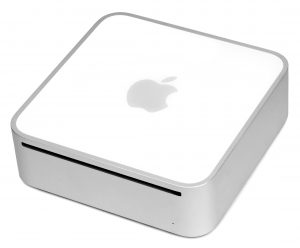Today I’m going back to the roots of when I started tinkering with Linux. I have recently got a new (old) workstation and I decided to install ArchLinux on a test SSD drive I had lying around. Once I got things working I thought I’d migrate to an NVMe drive, instead of reinstalling. This post describes the process. All of it can be found on the wiki, but since there are many options available, I’m posting the route I took.
Read moreTag: Linux
Replacing PulseAudio with PipeWire in KDE Neon
For some time now I’ve been running KDE Neon on my desktop Linux machine, and I’m loving it. I love getting the Latest and Greatest KDE features, on top of a boring and familiar distro like Ubuntu LTS.
I’ve been following PipeWire from a distance for a while, and it seemed to be ready for prime time so, after getting some choppy audio from by Bluetooth headphones I thought I’d give it a try.
It’s actually fairly easy, and while I was at it I decided to use a PPA which will allow us to use a more recent PipeWire version.
Without further ado:
sudo add-apt-repository ppa:pipewire-debian/pipewire-upstream
sudo apt full-upgrade
sudo apt install pipewire-pulse libspa-0.2-bluetooth
systemctl --user --now disable pulseaudio.{socket,service}
systemctl --user mask pulseaudio
systemctl --user --now enable pipewire{,-pulse}.{socket,service}
pactl info | grep '^Server Name'
That’s it really. The last command will show something like Server Name: PulseAudio (on PipeWire 0.3.49) confirming you are running PipeWire as your PulseAudio server!
So far, upon switching to PipeWire my audio is no longer choppy and the volume meter is correct (it used to display 100% while clearly not being at 100%), so count me in as a happy PipeWire user.

Upcycling an old Mac Mini with ChromiumOS
I’ve had an (now) old Mac Mini 2,1 for about 10 years now and it has served me well. It used to be my desktop machine, then media center, then small home server.
At some point I realized I had moved all services except the printing service, so I thought it was about time I decommissioned it, but it deserved one last shot, so here we are 🙂
Running Alpine Linux containers on LXD
So, more LXD! Today we are going to run some Alpine Linux containers on LXD. Why? Alpine describe themselves as a “security-oriented, lightweight Linux distribution based on musl libc and busybox.”, what’s there not to like? It has become quite popular in the Docker world due to the small yet fully functional containers one can create.
Building an Alpine container on LXD is not that straightforward, however. There are no Alpine images on the official repo, so we will have to build our own. LXD does provide some documentation on how an image should be like, lo let’s get to it!
I started by taking a look at the template for LXC. That was close enough, so I went ahead and modified it in order to create LXD images. That resulted in lxd-alpine-builder.
With that script, we can now create an image and then import it into LXD:
sudo ./build-alpine lxc image import alpine-v3.3-x86_64-20160114_2308.tar.gz --alias alpine-v3.3
That image is 2.39MB, w00t! You can check it by listing the images:
saghul@lxd-test:~$ lxc image list +----------------------------+--------------+--------+---------------------------------+--------+----------+-------------------------------+ | ALIAS | FINGERPRINT | PUBLIC | DESCRIPTION | ARCH | SIZE | UPLOAD DATE | +----------------------------+--------------+--------+---------------------------------+--------+----------+-------------------------------+ | alpine-v3.3 | 9888dd281789 | no | alpine v3.3 (20160114_23:08) | x86_64 | 2.39MB | Jan 14, 2016 at 11:10pm (CET) | | jessie-amd64 | 9f065ac6be10 | no | Debian jessie (amd64) | x86_64 | 102.66MB | Jan 12, 2016 at 4:17pm (CET) | | jessie-amd64-base | b85a1bdb5057 | no | Debian Jessie base | x86_64 | 87.98MB | Jan 12, 2016 at 9:56am (CET) | | jessie-amd64-base-sysvinit | 628b7f8470af | no | Debian Jessie base (no systemd) | x86_64 | 82.91MB | Jan 12, 2016 at 11:40am (CET) | | jessie-i386 | 769f90666ea8 | no | Debian jessie (i386) | i686 | 100.23MB | Jan 15, 2016 at 9:54am (CET) | +----------------------------+--------------+--------+---------------------------------+--------+----------+-------------------------------+
Now we can launch a container and test it out!
lxc launch alpine-v3.3 alpinetest lxc exec alpinetest /bin/ash # cat /etc/alpine-release 3.3.1
Happy containering!
